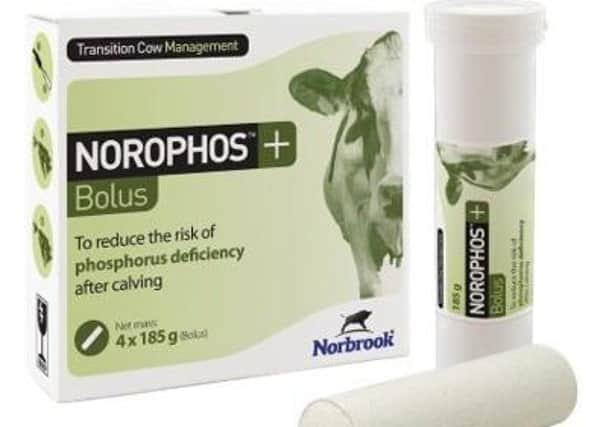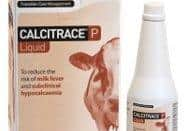Reduce risk of milk fever at calving


“The production of colostrum and the onset of lactation creates a significant demand for calcium at the time of calving. When the transition cow cannot mobilise sufficient reserves quickly enough, she can develop milk fever. Cows that are too thin or fat, older cows (third lactation plus) or that have a history of milk fever are more at risk,” explains Maura Langan, Norbrook Veterinary Advisor.
Clinical milk fever or hypocalcaemia is easily recognised and is characterised by general weakness and a depression of consciousness (downer cow). However, subclinical milk fever is a more common manifestation of the disease, with incidences ranging from 23% to 29%. Simply put, for every clinical case, another 3-6 cows in the herd are likely to be suffering from sub-clinical milk fever.
Advertisement
Advertisement
Sub-clinical milk fever, where the outward signs of illness are less obvious, can also have severe consequences for dairy herds. If subclinical milk fever is left untreated the affected cow has an increased risk of other clinical disease around the calving period. This might include a difficult calving, retained placenta, left displaced abomasum, ketosis and impaired reproductive performance. Research shows that a cow that develops milk fever is eight times more likely to get mastitis in the subsequent lactation. Hypocalcaemia has also been linked to impaired immune function and reduced milk yield. Cows with milk fever often have low phosphorus levels as well and this can impact on their recovery from milk fever. Oral phosphorus supplementation may be needed in these cases.


“It’s essential that farmers manage the calcium requirements of transition dairy cows for both their welfare and productivity. If a herd is affected by milk fever, the cost to the farmer can be substantial, with one Irish study estimating the costs of the average case of milk fever at €312,” explains Maura.
“Supportive therapies from Norbrook’s Transition Cow range containing readily available forms of calcium should be given to at risk cows around the time of calving to supplement the transition into lactation and reduce the risk of milk fever. Where clinical hypocalcaemia develops, intravenous infusion of Calciject40CM provides an immediately available source of calcium and we recommend they are followed up with longer lasting oral products such as CalcitraceD3 bolus or CalcitraceP liquid.”